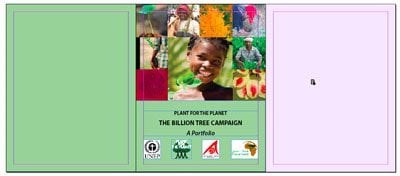Introducing Multiple Page Sizes in InDesign CS5
InDesign CS5's new Page Tool enables you to create multiple page sizes in the same document.

As David and Anne-Marie described in their InDesign CS5 overview, one of the most useful and exciting features is InDesign CS5’s ability to create multiple pages sizes in the same document. This is accomplished through the use of the new Page tool.
There are two main scenarios for how you might use this feature: In one scenario, you have a facing page document, and you want to create a gatefold (a foldout in a magazine or book). Alternatively, you might be designing a book cover, and you’d like to create layout with a back cover, spine, and front cover on the same spread as three pages. We’ll describe how to do that in this post.
The second scenario is that you’re creating the pieces of a company identity?perhaps a letterhead, envelope and business card. For convenience, you’d like to keep these pieces in the same InDesign document. In this case, each piece would be set up as non-facing pages.
I’ll start with a two-page spread to which I’d like to add a gatefold.
To add the narrower gatefold page on the right side of the spread, you need to be sure to deselect Allow Document Pages to Shuffle from the Pages panel menu.
Then insert a page to the right of the spread. Initially it will be at the same of the other pages in the spread. Then select the new Page tool (it’s in the selection tools because it’s used to select pages). Click the page whose size you want to change in the layout (not in the Pages panel).
The page will show a light purple highlighting. (You can also Shift-select or Command/Ctrl-select multiple pages in the layout to change the size of multiple pages at the same time.) When the Page tool is selected, the Control panel shows a new set of controls for setting page size and orientation. You can choose from preset page sizes, or enter a new width and height value to create a new page size.
The result is that the gatefold appears at the new size within the spread. (An alternative way to do the same thing would be to select the right page of the spread and make it wider to include the original page and the gatefold.) The first method is shown below.
On the right side of the Control panel when the Page tool is selected, there are three other controls:
- Enable Layout Adjustment gives you control over what happens to objects on the page when a page is resized. You’re using the same controls found in Layout > Layout Adjustment.
- Show Master Page Overlay shows you the outline of the master page applied to the current page. This is useful for several reasons: (1) You can see which master page is applied to a page. (2) If a page is a different size than the master applied to it, you can visually see how the master page is positioned relative to the page. (3) Finally, you can actually change the position of the master page applied to a page (see below).
- Objects Move with Page makes page objects move with the page if you adjust its position. (We’ll describe this in the next post.)
When you turn on Master Page Overlay, a purple border indicates the dimensions of the current master page as they are applied to the page. Using the Page tool, click on the border and drag to change where objects from the master page will appear on the document page. In the example below, the yellow star is on the master page, and it’s been moved to center it over the gatefold page. Notice that the master page name “C-Stars” also appears.
This feature lets you share master page content across multiple pages, but gives you the freedom to reposition where the master page content is positioned on each page it is applied to independently.
In the next posting, I’ll show you the second scenario for making multiple page documents?creating different sized pieces in a corporate identity within the same document.
This article was last modified on December 20, 2021
This article was first published on April 18, 2010








